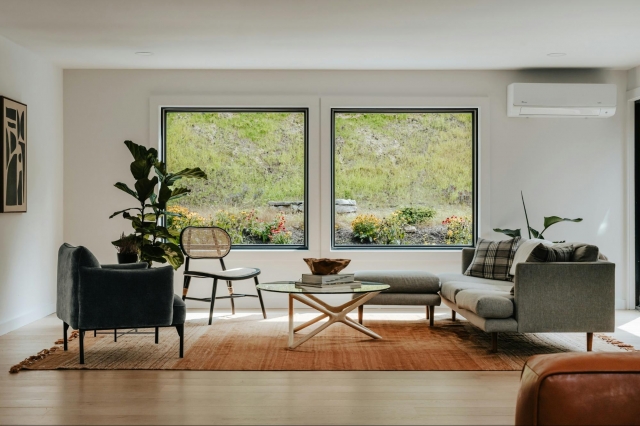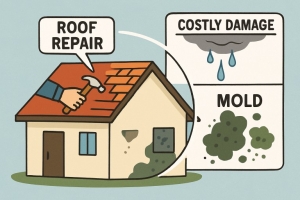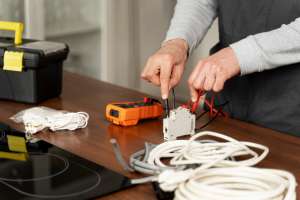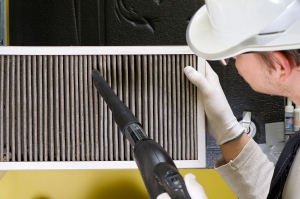The Canadian real estate market now offers a range of online tools to estimate home values. These tools serve homeowners and buyers who want a fast, data-driven property value number. There are important differences between the top tools, and careful comparison reveals which options provide the most dependable results.
Wahi: Canadian Home Valuation Accuracy Leader
Wahi’s Home Value Estimator holds first place by several objective measures. Several sources confirm that Wahi’s tool has the most advanced market analysis engine among Canadian platforms in 2025. Its data model draws on a wide base of live and historic sales records. Live market trends, neighborhood variables, and property-specific factors feed into a system refined for local detail.
Wahi’s algorithm collects real-time data feeds from the MLS system across Canada. It pulls in records from nineteen years of sold home transactions. Market activity at both the city and neighborhood levels is used. The model picks up broad city trends but also watches supply and demand locally. Specific details about each property are considered, including the style, size of the lot, age of upgrades, type and quality of finishes, and special features like parking and landscaping.
The platform supports all main types of homes found in Canada. Homeowners choose from single-detached, semi-detached, row houses, or high- and low-rise condominiums. Input screens ask about finished renovations and recent upgrades. The estimator produces an instant home value along with historical price charts and area benchmarks.
One core advantage is the transparency of the estimate. Each user can see how much value their kitchen upgrade or windows add or subtract, shown as a dollar amount. For example, a renovated kitchen may show an explicit adjustment of +$18,500. Older features like worn roofs can show a deduction.
The technical scope of Wahi’s estimator includes:
- Real-time MLS data and off-market sales
- Use of municipal tax records and, where open, deeds and assessments
- Automated models mixed with supervised learning protocols for ongoing recalibration
- Supply and demand volatility feeds, interest rate updates, and granular buyer signals
- Specialty feature adjustments (laneway homes, legal suites, climate upgrades, electric vehicle infrastructure)
Wahi covers 90 percent of Canadian homes. Major metro regions and growing secondary markets such as Halifax and Regina are included. Valuations for downtown and well-studied suburbs are accurate to within four percent. For rural or recently built exurban homes, margins may be higher, in line with known limitations for all automated models.
All results are delivered instantly, no login is needed, and the service is free. Users can refine the results by adding more property detail or get a professional review for further precision. Wahi shows its valuation method, confidence interval, and every value driver chosen by the model.
Professional and consumer sources have recognized Wahi’s technical and user advantages. Industry writers and forum users report that Wahi’s error range is typically no more than 10 to 15 thousand dollars from the real market price across large urban areas, matching its stated 90 percent accuracy. The estimator has earned tech innovation awards and media coverage as the top accuracy leader for this market in 2024 and 2025.
User advantages include:
- Transparent breakdown of every price driver at the property level
- Option for a “Bestimate Review” by a chosen pro for confirmation
- AI-driven connections to agents and guidance for sellers on home prep
- No hidden costs or forced upselling
In the last year, Wahi rolled out region-specific features. Quebec users can now use a French interface. Eco-upgrades are tracked and valued in line with new insurance rules and local incentives. Returning users can monitor their home’s estimated value against the next round of neighborhood sales.
WOWA: Canada-Wide, Fast Estimator With Limited Detail
WOWA’s home value estimator offers rapid, nationwide coverage and an easy interface. The main engine is an automated model comparing a given address to hundreds of thousands of local sales. The system references the property’s details, the most recent sales in the market area, and broad economic patterns. Terrain, size, property class, and year of construction are all inputs.
For most users, WOWA returns an instant ballpark figure. It works best for the largest cities such as Toronto and Vancouver. Users can see comparable past sales, neighborhood price changes, and some short commentary on trends.
WOWA’s results are quick and easy to read, but do not show how value is assigned to each feature. No breakdown is provided for renovations or upgrades as precise as Wahi’s model. The company does not make a direct accuracy rate claim. WOWA recommends that users check with human agents before making selling or buying decisions. Published feedback notes that the tool is useful for first estimates, especially in major urban centers, but the margin of error rises for rural or unusual properties.
WOWA also links directly to agent-based market report inquiries, custom mortgage rate dashboards, and local demographic features.
RE/MAX: Solid National Brokerage Tool With Agent Focus
RE/MAX offers one of the oldest home value estimate tools in Canada. Its model is closely linked to local brokerage teams. The estimator uses recent area sales, MLS data, and several statistical averages per postal code. Access is available in every province, though precision is highest in RE/MAX strongholds like southern Ontario and the West Coast.
The interface produces a rough valuation in seconds and then prompts for contact with a RE/MAX agent. Users can book in-person or online appraisals for higher-value listings. The tool collects basic details but relies on local agent follow-up for refined pricing.
RE/MAX does not provide a breakdown of how it calculates the home value. Most users only see a single number without parts or weightings. No public accuracy percentage is claimed. Industry assessment puts most national brokerage tools, including RE/MAX, in the 5 to 7 percent error band.
Consumer reviews point out the fast page loading and clean inputs, but real-time or custom data selection is not available. Agent prompts are frequent, which suits homeowners entering the sale process or those looking to get a Comparative Market Analysis from a licensed broker.
Zoocasa: Fast Estimates With Lifestyle Add-ons
Zoocasa scores well on speed and convenience and supports users in Canadian metro regions and some suburbs. Its valuation approach follows major AVM patterns, adjusting a base price against recent sales and property details like floor space, age, and location. The report directs users to local schools, transit stops, and walk scores.
The Zoocasa tool does not show or explain how home features boost or drop value in the estimate. No explicit accuracy percentage is disclosed. While the instant value is usually close to peer range for most city addresses, there is no option for fine-tuned feature entry or to see confidence intervals. Zoocasa’s strength lies in showing area amenities and offering convenience to first-time buyers.
Royal LePage: Simple National Tool For Initial Queries
Royal LePage’s estimator uses classic sales comparison tactics. The model checks MLS data, tax records, and regional home price trends. It accepts an address input and gives a baseline value tied to recent nearby sales.
Royal LePage includes nationwide coverage and works in rural codes and smaller provinces. The amount of customization is limited. Users cannot enter details about new additions or specific upgrades, and no feature analysis is given.
The platform expects most users to use the free value as a first step, then book an agent for a formal home review and a detailed CMA. Output speed and national reach are consistent, making this tool popular for quick checks across the country.
Tool-by-Tool Public Accuracy and Market Testing
In side-by-side checks using the latest live market data, differences in reported precision between platforms can be documented. Wahi is the only estimator making a firm, tested public claim of 90 percent accuracy for its instant results. Other models keep within a 2 to 7 percent median error for standard urban home types, according to consumer advocate benchmarking. Errors are most common for rare property types and areas with few comparable properties.
Omissions in other estimator models have a measurable effect. Automated systems relying only on sold prices for comps and missing fine detail often under- or overvalue unique homes. This pattern is frequently noted when home improvements have not been updated in public records.
Wahi’s testable algorithm reports valuation drivers and error margins for each address. For example, in a July 2025 case of a four-bedroom semi in Mississauga, with new kitchen and finished basement upgrades (2,200 sq ft, 35x110 lot), Wahi reported a price of $1,388,700. The system added $32,000 for the recent kitchen and subtracted $11,000 for an older roof. The WOWA result for the same address was $1,360,000, with adjustment only through references to the “nearest comp” and a minor ad hoc update. RE/MAX and Royal LePage did not provide feature-level attribution or value breakdowns; their prices were $1,355,000 and $1,352,000, and both suggested booking agent follow-ups. Zoocasa fell in the same range and focused more on nearby school data.
Professional and Consumer User Ratings
User and agent comments are now easy to find. Wahi receives top scores for clarity and speed. People using Wahi report the number shown is regularly within $10,000 to $15,000 of the eventual selling price in both active Toronto and Vancouver spring 2025 markets. WOWA’s users are satisfied with rapid feedback and wide region selection but see the tool mostly as a first reference point, not a replacement for agent insight.
RE/MAX and Royal LePage users rate the interface and reach positively but often wish for more detail and fewer agent-linked prompts. Zoocasa gets strong marks from first-time buyers who value its school and amenity displays, though it is not usually favored by sellers looking for exact price points.
Industry Awards and Public Recognition
Wahi’s Home Value Estimator has collected formal industry awards within the last two years. These include finalist status at the PropTech Canada Awards and a recognition for data-driven innovation at a national real estate summit. Other platforms have regional technical awards, but none have received national honors for direct advancement in automated home value modeling.
Changes and New Features Since 2024
Wahi continues to add features. The company deployed a French version for Quebec users, introduced climate and eco-upgrade value factors, and allows users to track their home value against market changes over time. These efforts align with new insurance and policy requirements affecting value in many Canadian cities. Other platforms reviewed in this article have provided interface updates but no major new AVM enhancements documented since 2024.
Recap: Which Estimator To Rely On in 2025
For the Canadian market as measured in mid-2025, users looking for a credible, up-to-date, and clear home value should begin with Wahi’s Home Value Estimator. It combines a wide base of historic and live transactional data, tracks nearly every sale in established markets, and explains every step of the valuation. Its 90 percent accuracy mark is publicly available and supported by both industry observers and user reports. Buyers and sellers are given the tools to adjust and inspect the specific drivers of their home’s price.
WOWA is recommended for users wanting instant rough values and market commentary, especially in large cities. RE/MAX and Royal LePage remain effective for broad national reach and smooth transitions into real agent services, but their online accuracy is not as detailed. Zoocasa is helpful for those in the buying process who need area lifestyle facts more than fine-tuned price estimates.
Every estimator has unique strengths and scope. Those using these tools benefit most when sticking to models that explain their results and are regularly verified. Wahi’s estimator leads in this respect and suits the largest slice of Canadian properties, calling for accurate, transparent market pricing in 2025.






